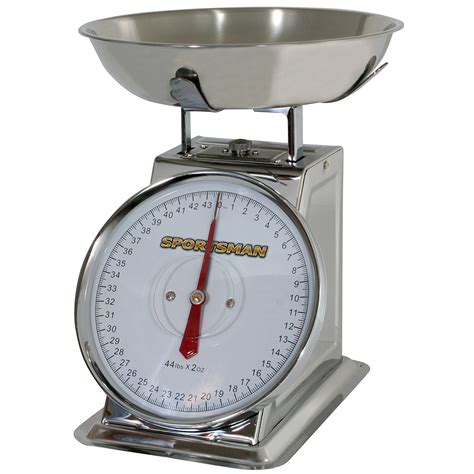Scales: A Comprehensive Guide to Measuring and Weighing
Scales, an indispensable tool in various industries and everyday life, play a crucial role in ensuring accuracy and precision in measurement and weighing. From the delicate precision of analytical balances to the robust construction of truck scales, scales come in diverse designs and capacities to cater to a wide range of applications. Understanding the fundamentals of scales, their types, and their uses is essential for effective and accurate measurements.
Types of Scales
1. Analytical Balances:
- Precision instruments used for highly accurate weighing of small masses, typically in milligrams or micrograms.
- Commonly used in laboratories, research institutions, and jewelry making.
2. Precision Balances:

- Less precise than analytical balances, but offer higher capacity for weighing objects up to several kilograms.
- Used in industrial settings, quality control labs, and pharmacies.
3. Top-Loading Balances:
- Designed with a platform on top for easy loading of objects.
- Widely used in retail, shipping and receiving, and general weighing applications.
4. Bench Scales:
- Compact and portable, with a weighing platform on top or below the display.
- Ideal for use in laboratories, workshops, and retail environments.
5. Crane Scales:

- Rugged scales suspended from a crane or hoist for weighing heavy loads.
- Commonly used in industrial settings, construction, and shipping.
6. Truck Scales:

- Large-capacity scales designed to weigh trucks and other heavy vehicles.
- Installed at weigh stations, transportation hubs, and industrial facilities.
How Scales Work
Scales operate on the principle of measuring the force exerted by an object's weight. This force is converted into an electrical signal, which is then displayed as a weight reading. The accuracy and precision of a scale depend on several factors, including the type of sensor, the calibration, and the environmental conditions.
Scales in Everyday Life
Scales play a vital role in our daily lives, from the kitchen to the doctor's office. In the kitchen, scales help us measure ingredients for cooking and baking. In the doctor's office, scales are used to monitor weight and track body mass index (BMI).
Scales in Industry
In industry, scales are essential for a wide range of applications, including:
- Manufacturing: Measuring raw materials, components, and finished products.
- Logistics: Weighing shipments, parcels, and containers.
- Healthcare: Measuring patient weight, dosages, and medical equipment.
- Agriculture: Weighing crops, livestock, and feed.
Benefits of Using Scales
- Accuracy and Precision: Scales provide reliable and accurate weight measurements, ensuring consistency and quality control.
- Efficiency: Scales streamline processes and improve productivity by eliminating manual calculations and reducing errors.
- Safety: Weighing heavy objects with appropriate scales ensures safety and prevents accidents.
- Compliance: Scales help businesses comply with industry regulations and standards for accurate weight measurements.
Common Mistakes to Avoid
-
Overloading the Scale: Exceeding the scale's maximum capacity can damage the sensor and compromise accuracy.
-
Using a Scale on an Uneven Surface: The scale should be placed on a flat and level surface to ensure accurate readings.
-
Ignoring Calibration: Regularly calibrating the scale ensures its accuracy and reliability.
-
Weighing Objects Directly on the Scale Platform: Placing objects directly on the platform can cause damage and interfere with measurements.
How to Use a Scale
Step 1: Choose the Right Scale: Select a scale with the appropriate capacity and accuracy for your application.
Step 2: Calibrate the Scale: Follow the manufacturer's instructions to calibrate the scale before using it.
Step 3: Place the Object on the Platform: Gently place the object to be weighed on the scale platform, avoiding direct contact with the sensor.
Step 4: Read the Measurement: Allow the scale to stabilize and read the weight measurement displayed on the screen.
Step 5: Clean the Scale: Regularly clean the scale platform and housing to maintain accuracy and prevent contamination.

FAQs
1. What is the accuracy of a scale?
Accuracy refers to how close a measurement is to the true value. It is usually expressed as a percentage of the scale's maximum capacity.
2. What is the precision of a scale?
Precision refers to the consistency of repeated measurements. It is expressed as the standard deviation of repeated measurements.
3. How often should a scale be calibrated?
The frequency of calibration depends on the usage and environment. Generally, scales should be calibrated regularly, especially after any repairs or relocation.
4. Can scales be used to measure liquids?
Yes, but specialized scales with a density factor are required for accurate liquid measurements.
5. How do I convert scale readings between different units of measurement?
Use a conversion table or online calculator to convert weight readings between units such as grams, pounds, and ounces.
6. What are the different types of scale sensors?
Common scale sensors include strain gauges, load cells, and piezoelectric sensors.
7. How can I troubleshoot a scale that is not working correctly?
Check for power, calibration, and any physical damage to the scale or platform. If the problem persists, contact the manufacturer or a qualified technician.
8. What is the capacity of a scale?
Capacity refers to the maximum weight that a scale can accurately measure.
Conclusion
Scales are versatile and invaluable tools that provide accurate and precise measurements in various industries and everyday life. Understanding the different types of scales, their functions, and proper usage is crucial for ensuring reliability and accuracy in weighing and measurement applications. By following best practices and avoiding common mistakes, you can optimize the performance and longevity of your scales and achieve optimal results.
